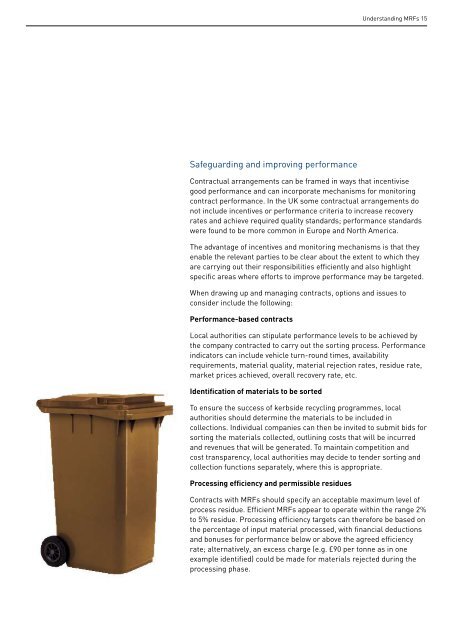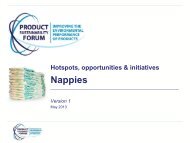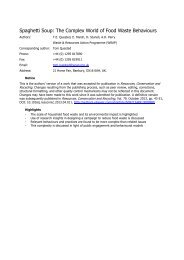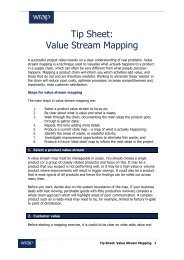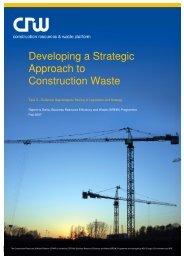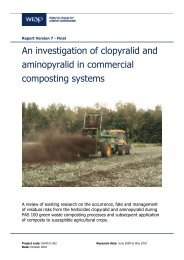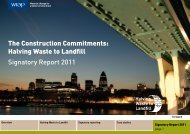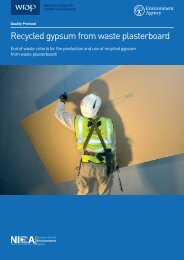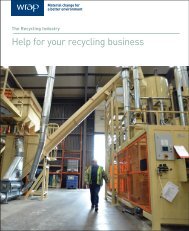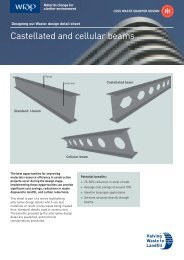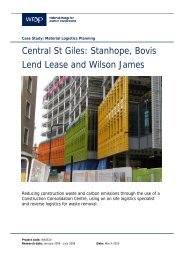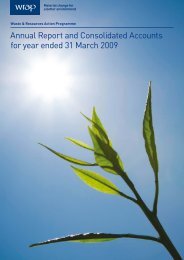Recovering value from MRFs (754.52 KB) - Wrap
Recovering value from MRFs (754.52 KB) - Wrap
Recovering value from MRFs (754.52 KB) - Wrap
- No tags were found...
You also want an ePaper? Increase the reach of your titles
YUMPU automatically turns print PDFs into web optimized ePapers that Google loves.
Understanding <strong>MRFs</strong> 15Safeguarding and improving performanceContractual arrangements can be framed in ways that incentivisegood performance and can incorporate mechanisms for monitoringcontract performance. In the UK some contractual arrangements donot include incentives or performance criteria to increase recoveryrates and achieve required quality standards; performance standardswere found to be more common in Europe and North America.The advantage of incentives and monitoring mechanisms is that theyenable the relevant parties to be clear about the extent to which theyare carrying out their responsibilities efficiently and also highlightspecific areas where efforts to improve performance may be targeted.When drawing up and managing contracts, options and issues toconsider include the following:Performance-based contractsLocal authorities can stipulate performance levels to be achieved bythe company contracted to carry out the sorting process. Performanceindicators can include vehicle turn-round times, availabilityrequirements, material quality, material rejection rates, residue rate,market prices achieved, overall recovery rate, etc.Identification of materials to be sortedTo ensure the success of kerbside recycling programmes, localauthorities should determine the materials to be included incollections. Individual companies can then be invited to submit bids forsorting the materials collected, outlining costs that will be incurredand revenues that will be generated. To maintain competition andcost transparency, local authorities may decide to tender sorting andcollection functions separately, where this is appropriate.Processing efficiency and permissible residuesContracts with <strong>MRFs</strong> should specify an acceptable maximum level ofprocess residue. Efficient <strong>MRFs</strong> appear to operate within the range 2%to 5% residue. Processing efficiency targets can therefore be based onthe percentage of input material processed, with financial deductionsand bonuses for performance below or above the agreed efficiencyrate; alternatively, an excess charge (e.g. £90 per tonne as in oneexample identified) could be made for materials rejected during theprocessing phase.


